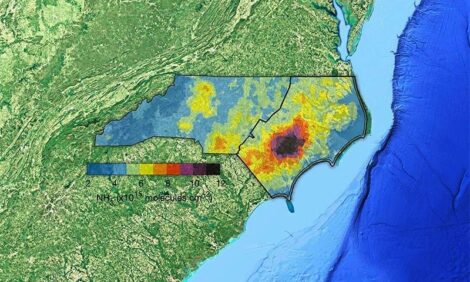



Developing Strategies for Water Conservation for Producers
Animal drinking and cleaning are the top uses of water in pig barns, write Alvin Alvarado (MSc), Bernardo Predicala (PhD) and Y. Jin (PhD) of Prairie Swine Centre, who report reduced water usage when water is provided to pigs in a trough (compared to nipple drinkers) and using a conventional nozzle on pressure washers.Summary
Using water conservation
strategies to reduce water use will ultimately
lower cost of production and contribute towards
a more sustainable environment as less manure
slurry is created.
In order to find out which
water conservation strategy is most effective,
experiments were performed using different
animal drinkers and cleaning strategies.
It was
found that about 60 per cent less water wastage was
achieved when a trough with side panel and
constant water level was used than the
nipple drinkers. Also, at barn clean–up, the use of
a conventional nozzle led to less time and water
consumption during high pressure washing.


Introduction
In swine operations, water is mainly used for
animal drinking and cleaning. The rate of water
use has an impact on the overall production cost
and on the environment. Indiscriminate use of
water can increase the volume of waste water
and manure slurry generated from the operation
leading to added manure handling costs, and
improper manure management particularly during
land application can potentially lead to degradation
of water bodies. Therefore more efficient use
of water is essential not only for economic reasons but also for environmental sustainability
considerations.
This report describes different
water conservation practices pertaining to animal
drinking and cleaning in an actual barn facility and
assesses their effectiveness in reducing overall
water use.
Experimental Procedures
Two different experiments were performed. The first experiment involved installing three different drinkers in a grow-finish room to evaluate the overall water use (disappearance), water wastage, and water contamination level, as well as average daily gain and average daily feed intake of the grow-finish pigs. The animal drinkers used included a nipple drinker, a nipple with side panel, and a trough with side panel and constant water level (Figure 1).

The second experiment involved performing two different cleaning strategies in a grow-finish room with partially and fully slatted concrete flooring. The cleaning strategies included:
- 1) water sprinkling (soaking) prior to high pressure washing and
- 2) use of different high pressure washing nozzles: conventional nozzle, Y-nozzle, water broom, and 4-in-1 nozzle (Figure 2).
The water consumed, the time spent during subsequent pressure washing as well as the surface cleanliness were then evaluated.

Results
* "A modified water trough reduced water wastage by 60 per cent compared to a standard water nipple." |
For animal drinking, it was found that about 60 per cent reduction in water wastage was achieved when a trough with side panel and constant water level was used compared to the nipple drinkers (Figure 3). The water intake from all drinkers were within the water intake requirements for grower-finisher pigs. In addition, the use of the trough with side panel and constant water level had no significant effect on average daily gain and average daily feed intake of pigs although the water in the trough had significantly higher microbial ATP (adenosine triphosphate) levels than in nipple drinkers.

Examining the cleaning strategies, it was found that water sprinkling (soaking) in fully and partially slatted concrete flooring resulted in significantly higher water consumption than without sprinkling. However, sprinkling partially offset the washing time. Comparing the different nozzles, the use of the conventional nozzle led to the lowest time spent cleaning and water consumed among all test nozzles (Figure 4). Also, the use of the Y-nozzle or the conventional nozzle achieved the highest significant reduction in microbial ATPs on plastic and concrete surfaces, respectively.

The Bottom Line
The use of the trough with the side panel and
constant water level for drinking has the greatest
potential for water savings without affecting pig
performance.
High pressure washing using
the rotating turbo nozzle led to less time and
water consumption during the cleaning process.
Also, high pressure washing in fully slatted
concrete flooring can be done without prior water
sprinkling (soaking).
Acknowledgement
Project funding provided by Saskatchewan
Agriculture Development Fund. Strategic funding
provided by Saskatchewan Pork Development
Board, Alberta Pork and Manitoba Pork Council.
April 2012







